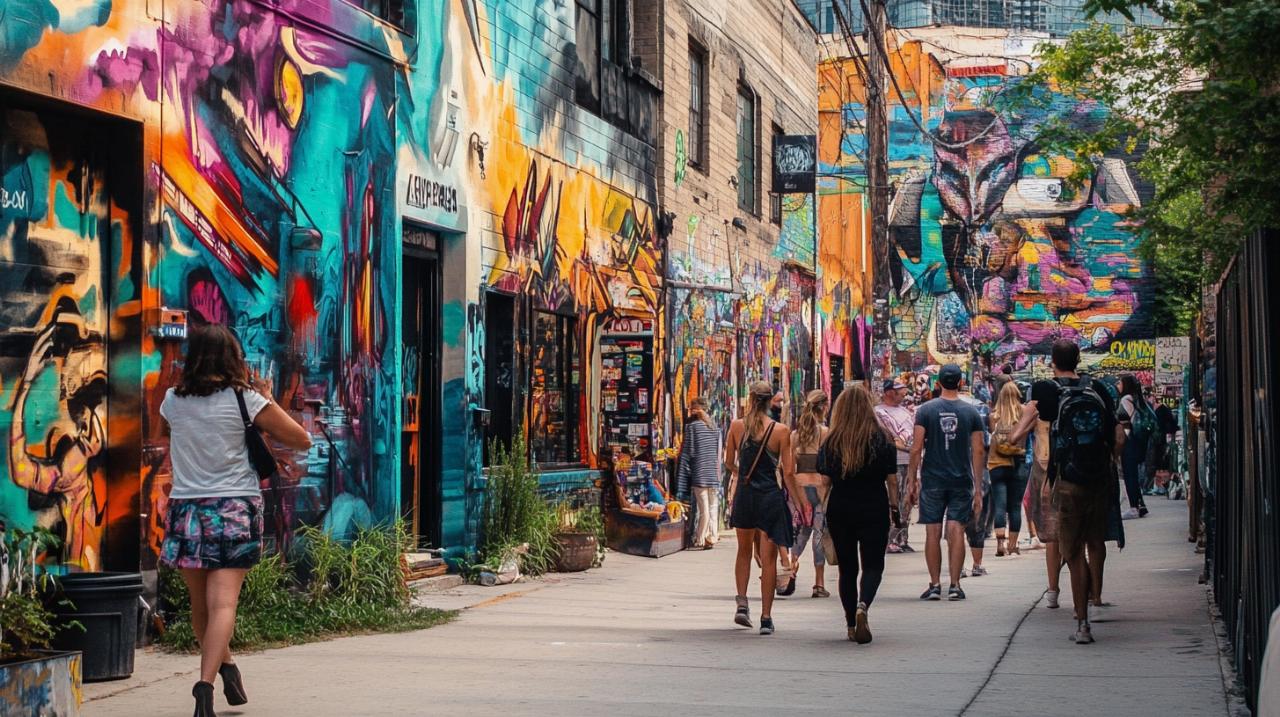Urban art has emerged as one of the most dynamic and transformative forces in contemporary culture, reshaping the way we perceive public spaces and challenging established notions of artistic legitimacy. From the gritty streets of New York and Philadelphia to the creative neighbourhoods of London, Berlin, and São Paulo, this global movement has turned city walls into vibrant canvases that reflect the social, political, and cultural narratives of our time. Born from the graffiti culture of the 1970s, street art has evolved from an act often deemed vandalism into a widely recognised and celebrated artistic practice. It speaks to diverse audiences through bold visuals and accessible mediums, making art a democratic experience that transcends gallery walls. Platforms such as https://www.callecultura.es/ explore the intersection of urban art, society, and contemporary culture, offering inspiration and reflection on the collective creativity that defines modern city life. As urban art continues to influence fashion, contemporary art, and everyday experiences, it invites us to reconsider the role of creativity in shaping our shared environments and collective identity.
The transformation of public spaces through street art
Urban art has fundamentally altered the character of public spaces, turning once drab and overlooked urban landscapes into sites of visual excitement and cultural significance. Cities around the world have witnessed the emergence of murals, graffiti, and large-scale installations that breathe new life into forgotten alleyways, industrial districts, and residential neighbourhoods. This transformation is not merely aesthetic; it represents a reclamation of public space by artists and communities who seek to express their identity, values, and aspirations. By engaging with the built environment in such a direct and unmediated way, street artists create a dialogue between the artwork, the space, and the people who inhabit it. The impermanent nature of these works mirrors the ever-changing narratives of urban life, where each piece may be painted over, weathered by the elements, or replaced by new creative interventions. This constant flux ensures that the urban canvas remains alive and responsive to the shifting dynamics of contemporary society.
How murals and graffiti reshape urban landscapes
Murals and graffiti serve as powerful tools for reshaping urban landscapes, offering a visual language that communicates complex ideas and emotions in an immediate and accessible manner. These works often utilise bold colours, striking imagery, and innovative techniques to capture the attention of passersby and invite them to engage with the art on a personal level. In cities such as Melbourne and Edinburgh, entire districts have become renowned for their street art, attracting tourists and art enthusiasts who come to experience the unique character of these neighbourhoods. The transformation is not limited to visual appeal; it also fosters a sense of place and belonging among residents. When a mural depicts local history, cultural heritage, or community values, it reinforces the identity of the area and provides a focal point for social interaction. Artists such as Eduardo Kobra and Keith Haring have demonstrated how large-scale murals can revitalise neglected spaces, turning them into landmarks that celebrate the creativity and resilience of urban communities. The presence of such art challenges conventional perceptions of what constitutes a gallery or museum, democratising access to culture and making it an integral part of everyday life.
Community Identity and Artistic Expression in City Streets
Street art plays a crucial role in articulating community identity and fostering a sense of collective ownership over public spaces. In many urban areas, artists collaborate with local residents to create works that reflect shared experiences, aspirations, and struggles. This collaborative process transforms the act of creating art into a communal activity, where diverse voices contribute to the final piece. The resulting murals and installations often celebrate the cultural diversity of the neighbourhood, highlighting themes of inclusion, resistance, and solidarity. In cities like São Paulo and London, street art has become a vehicle for marginalised communities to assert their presence and challenge dominant narratives that might otherwise exclude them. The visual language of graffiti and murals allows for the expression of complex social and political ideas in a form that is both immediate and impactful. By claiming walls and other surfaces as canvases, communities stake a claim to their environment, asserting their right to shape and define the spaces in which they live. This process of artistic expression and community engagement is essential for fostering social cohesion and resilience in the face of rapid urban change and gentrification.
Urban Art as a Catalyst for Social Commentary and Change

Beyond its aesthetic contributions, urban art serves as a potent catalyst for social commentary and political activism, challenging societal norms and power structures through visual means. Artists operating in the public realm have long used their work to critique injustice, advocate for change, and amplify voices that are often silenced by mainstream institutions. The immediacy and accessibility of street art make it an ideal medium for conveying urgent messages and sparking public debate. Works by iconic figures such as Banksy, Shepard Fairey, and Jean-Michel Basquiat have become synonymous with social and political activism, using satire, symbolism, and powerful imagery to question authority and celebrate diversity. These artists have demonstrated that art need not be confined to galleries or museums to effect meaningful change; rather, it can intervene directly in the public sphere, reaching audiences who might never set foot in a traditional art institution. The themes explored in urban art often include identity, community, protest, and resistance, reflecting the lived experiences and struggles of ordinary people. By making these issues visible and accessible, street art contributes to a broader cultural conversation about justice, equality, and the future of our cities.
Political messages and activism through visual culture
Political messages and activism have long been central to the practice of urban art, with artists using walls, buildings, and public infrastructure as platforms for dissent and advocacy. The visual language of street art is uniquely suited to conveying complex political ideas in a direct and accessible manner, cutting through the noise of traditional media and speaking directly to the public. Works such as Shepard Fairey's Hope poster and Banksy's Girl with a Balloon have become iconic symbols of political movements and social causes, resonating with audiences far beyond their original contexts. These pieces exemplify how urban art can distil powerful messages into a single image, making them memorable and widely shareable. Street art's ability to reach diverse audiences is one of its greatest strengths, as it does not require specialised knowledge or access to elite spaces. Instead, it meets people where they are, inviting them to reflect on pressing issues and consider alternative perspectives. In cities like Berlin and Philadelphia, where street art has a rich history, the walls have become archives of political struggle and resistance, documenting the aspirations and frustrations of successive generations. This tradition of activism through visual culture continues to inspire new waves of artists who see their work as a tool for social change and a means of holding power to account.
Challenging traditional art boundaries and institutional norms
Urban art challenges traditional boundaries and institutional norms by questioning who gets to define what constitutes legitimate art and where it should be displayed. For decades, the art world has been dominated by galleries, museums, and other formal institutions that act as gatekeepers, determining which artists and works are worthy of recognition and support. Street art disrupts this hierarchy by operating outside these structures, creating art that is freely accessible to all and not beholden to the tastes or preferences of curators and collectors. This democratisation of art has profound implications for contemporary culture, as it opens up new possibilities for creative expression and audience engagement. Artists such as Os Gemeos and Keith Haring have used public spaces as their primary canvas, rejecting the notion that art must be confined to the white walls of a gallery to be taken seriously. Their work demonstrates that art can be just as powerful, if not more so, when it is encountered in the streets, where it becomes part of the everyday experience of city life. At the same time, the rise of urban art has prompted questions about commercialisation and institutionalisation, as galleries and collectors increasingly seek to acquire and exhibit street art in traditional settings. This tension between the radical origins of the movement and its growing acceptance within the mainstream art world reflects broader debates about authenticity, ownership, and the role of art in society. Despite these challenges, urban art continues to push boundaries and inspire new generations of artists who are committed to using their work to challenge norms, celebrate diversity, and advocate for a more just and equitable world.





